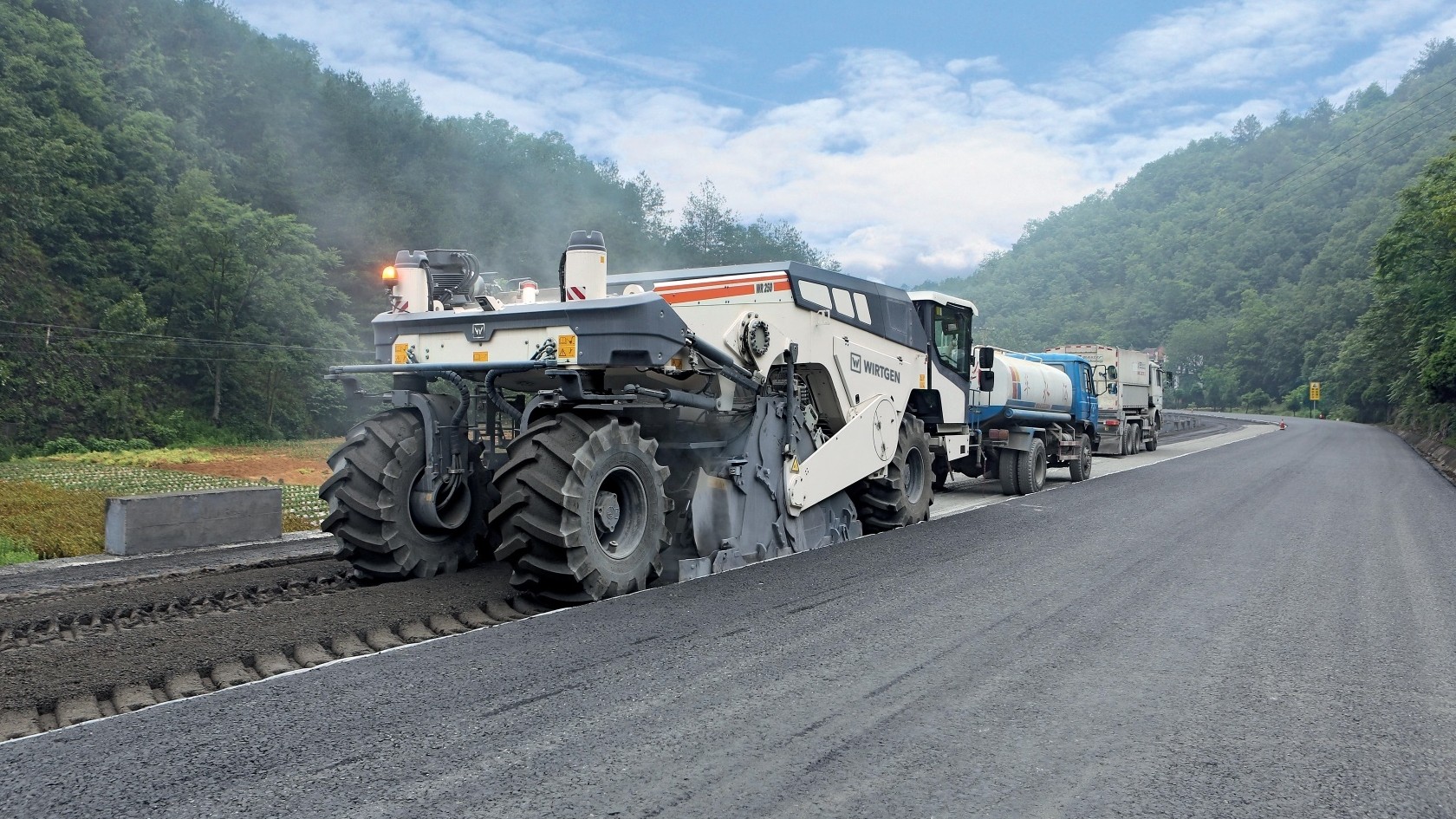Technology: Recycling and soil stabilisation


Become acquainted with the operating principle and technical components of the recycling and soil stabilization technology. Get to know the different types of cold and hot recyclers, and learn more about our soil stabilizers.
Soil stabilisers convert ground of insufficient bearing capacity into soil that is highly suitable for placing and compacting. Added lime improves the existing soil, while added cement strengthens it. Our soil stabilisers master a wide range of different applications in soil improvement and soil strengthening, such as the construction of roads, parking lots, industrial facilities, airports, harbour facilities or track beds. They can also be used for various earthmoving operations, such as the construction of embankments, slopes and backfills.
Become acquainted with the operating principle and technical components of soil stabilisation. Get to know the milling and mixing process, and learn more about this fast-paced and highly efficient technology.
The key benefits of environmentally friendly soil stabilisers
The technology makes use of existing materials, requiring only small quantities of additives or binding agents to be added. The reclaimed, bound and unbound road construction materials are fully reused. Fewer truck transports having a negative impact on the environment are required in comparison with conventional soil exchange. In addition, the fast-paced method minimizes space requirements and environmentally harmful disruptions to traffic. To put it briefly: our environmentally friendly method is convincing a steadily increasing number of customers in all parts of the world.
Soil stabilisation
The cold recycling process involves milling and granulating damaged asphalt layers which are then rebound, placed again and compacted. WIRTGEN cold recyclers are the ideal choice for a broad scope of applications ranging from recycling thin asphalt layers on minor roads with low traffic volumes all the way to recycling thick asphalt packages on heavily trafficked motorways subject to extreme loads.
Become acquainted with the operating principle and technocal components of the cold recycling technology. Get to know the maximum range of applications of cold recycling, and learn more about this environmentally friendly process.
Concentrated knowledge from research and job-site experience
View hands-on guideConcentrated knowledge from research and job-site experience
View hands-on guideA ground-breaking technology on the path to global success
View history of WIRTGEN recyclers